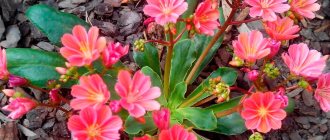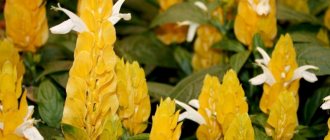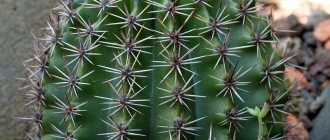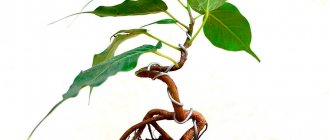If you are a lover of beautiful and long-blooming indoor plants, the flowers of which exude a magical aroma, we recommend purchasing Gardenia Jasminoides (Jasmine). This flower captivates with its snow-white, wax-like, double flowers, the aroma of which, during long flowering, fills the space around itself with the wonderful scent of jasmine. It is believed that Gardenia Jasmine symbolizes femininity, grace and beauty. Caring for Gardenia Jasmine at home is fraught with some difficulties, but rest assured, our article will help even novice gardeners overcome them all!
Some facts from the history of the flower
The Song Dynasty, which lived approximately a thousand years ago, was the first to tell the world about the wonderful flowers of Gardenia. Pots with these flowering plants decorated the chambers of the emperors of China. The court gardeners did not allow the bushes to grow and formed the bushes in the form of bonsai (spectacular miniature trees with a fancy crown) and ensured that they bloomed abundantly and luxuriously.
An unusual flower, with snow-white fragrant flowers, its smell reminiscent of blooming jasmine, was first described by the American botanist Alexander Garden in the 13th century. This plant was later named after him.
In Europe, Gardenia Jasmine appeared in the mid-18th century, where they also began to shape its crown using pruning. There she competed in beauty and fragrance with the most luxurious roses and peonies.
Forget about watering gardenia in a tray!
Since the soil for replanting is light and loose - most often it is a mixture of leaf and coniferous soil - it dries out quickly, and in order to saturate it with moisture, longer contact with water is required. Such contact can be achieved by immersion watering, i.e., we take a pot with a plant, place it in an empty basin, pour it on top, let the water in the basin rise to the level of half the height of the pot, leave it for 15 minutes and then return the plants to their place. Don’t forget to remove the water from the trays after watering the gardenia. Forget about such a common technique as watering in a tray - this is extremely dangerous for gardenia.
If watering into a tray does not saturate the soil with moisture, the plant begins to suffer from waterlogging of the lower part of the substrate, while its upper part will be overdried.
Gardenia jasmine prefers moist air, so we humidify it by placing vessels with water nearby, or by installing a humidifier. It is especially sensitive to air humidity during the budding period. If the air is dry, it drops buds. Most often this happens in winter and early spring, during the period of central heating.
Each flower remains on the plant for about a week. During this time, its color changes from white to cream or pale yellow.
Description of the flower
Gardenia Jasminoides (Gardenia Jasminoides) has synonyms - Gardenia Augusta, Cape jasmine. This is an evergreen plant from the Mirenaceae family. It is native to the tropical forests of India, China and southern Africa. There it grows, most often in the form of shrubs, but there are trees up to two meters in height. Indoor specimens usually grow up to 60–80 cm. The shoots are smooth, bare, highly branched, and woody. Dark green leathery leaves, up to 8 cm long, grow in pairs on short petioles. In shape they are broadly lanceolate or reverse ovoid, glossy, narrowed towards the base. Gardenia jasmine blooms in nature twice a year.
The benefits of indoor Gardenia
The beautiful shape of the Gardenia flower with originally arranged glossy petals is reflected in needlework. Craftswomen create with their own hands unique kanzashi in the form of Jasmine Gardenia flowers to decorate brooches, hairpins, hairbands, as well as gifts from polymer clay.
The scent of Gardenia Jasmine is used by famous perfume brands, such as: Nina Ricci Premier jour, Dior Addict Shine, Chanel Gardenia, Dior Miss Dior, Estee Lauder Intuition, Agent Provocateur, Guerlain Cruel Gardenia.
In addition to its spectacular appearance and unique aroma, Gardenia is valued for its healing properties. For example, the roots and fruits of this plant are used to prepare medicinal decoctions for the treatment of tonsillitis, stomatitis, and jaundice. They are used to make antipyretic, anti-inflammatory and hemostatic agents.
Folk recipes from the fruits of Gardenia Jasminoides
Treatment of herpes, sore throat, stomatitis : 1 tbsp. l. Place the chopped Gardenia fruits in a small saucepan and pour 500 ml of boiling water into it. Place on low heat, covered, for 10 minutes. Let the broth brew for an hour, then cool and strain the contents through two layers of gauze.
- For herpes - apply lotions with a cotton swab dipped in a decoction to the herpes-affected areas two to three times a day.
- For sore throat or stomatitis, gargle with Gardenia decoction 3 times a day.
For wounds and bruises, prepare the following anti-inflammatory and healing agent:
Grind 50 gr. fresh Gardenia fruits to a paste. Place this paste in 2 layers of gauze and apply to a wound or injured area of skin for one to two minutes several times a day.
It is important to know that the plant contains a small amount of toxic substances. Infusions and decoctions can only be used externally, in the form of lotions, rubbing, and rinsing. When working with any parts of the plant, wear gloves and wash your hands with soap after work. Keep medicines and flower pots away from children and pets.
Types and varieties of Gardenia Jasmine
We invite you to get acquainted with the most popular varieties of Gardenia Jasmine, which are grown at home:
Radican Variegata or Radicans is a dwarf variety suitable for bonsai formation
Beauty (August Beauty) - a profusely blooming variety of Gardenia with large double flowers
Gardenia Chuck hayes blooms with fragrant semi-double ivory flowers. Well adapted to the garden
Gardenia Fortunea has large white and cream double flowers.
Gardenia Tahitiana has an interesting, propeller-like petal shape.
Kula blooms with golden flowers
Veitchii is a plant with dark green, glossy leaves and white, double, fragrant flowers. Blooms in winter, December inclusive. A very popular variety, highly valued by gardeners.
Fortuniana – Fortuna (Gardenia jasminoides var. Fortuniana) – with large camellia-shaped flowers with a double flower diameter up to 10 cm.
Other popular Gardenia varieties:
First love - with large, up to 13 cm, double whitish-cream fragrant flowers. Flowering occurs in early spring and lasts all summer. It can bloom twice a year.
Kleims Hardy is small in size with white waxy flowers that bloom during spring and summer.
This may be interesting: Ruellia - home care
White Gem is a compact bush with small dark green, oval leaves. The flowers are star-shaped, five-petaled.
Four Seasons - with comfortable maintenance, it can bloom all year round. Double flowers. The leaves are oblong, pointed.
Mystery – large flowers. Long flowering period.
Caring for Gardenia Jasmine
And now the time has come to learn how to care for Gardenia. When deciding to decorate your life with an amazing, but rather capricious flower called Gardenia Jasmine, try to adhere to the rules of caring for it at home.
Pot location
Gardenia is a very demanding flower in terms of location and lighting. Choose a place for it on window sills (or flower stands near them) facing east or west. Choose windows in front of which there are no trees with a dense crown - the flower loves good lighting.
You can grow Gardenia on a southern windowsill, but you will have to protect it from direct sunlight on its leaves and flowers at midday. Use blinds or a light curtain. The sun shining through the glass will certainly harm the plant, its leaves will get burned and fall off.
Try to keep her in the light for at least 12 hours a day. In winter, when natural light is clearly not enough, illuminate the flower with fluorescent lamps or phytolamps LB or LBU.
During the period of budding and flowering, do not move the pot from place to place, do not turn it in different directions towards the light - the flower does not like this. This is stress for the plant, which will lead to the shedding of buds and flowers.
When choosing a place for a flower, remember that the blooming Gardenia Jasmine exudes a pleasant, but very strong aroma - it is better not to place it in the bedroom.
Temperature
The very heat-loving Gardenia does not like low temperatures and sudden temperature changes during the day. In spring and early summer, it is advisable to maintain a constant air temperature within 22 - 24 degrees. in the afternoon and 18 - 20 degrees. at night. During bud formation and flowering, a temperature of about 20 degrees is considered optimal. In winter, the temperature is reduced to 17 - 20 degrees. during the day and not lower than 16 degrees. at night. At this time, buds are forming on the shoots. If the temperature is higher, twigs will begin to grow to the detriment of the formation of flower buds.
The critical temperature for Gardenia is 12 degrees. heat.
The soil should also not be cooled too much, so as not to harm the plant’s root system. A flower in cold soil may refuse to form buds.
Air conditioners and split systems help maintain the desired temperature in the room. Just make sure that air currents do not hit the plant. Drafts will provoke the flower to shed buds and flowers , and not only - already formed flower buds may fall off.
The fall of buds and flowers is also possible due to dry and musty air in the room - ventilation is necessary. But, do not forget to cover the pot from drafts.
Humidity
Gardenia should be regularly sprayed on the leaves using a fine spray bottle. Until the buds open - every day. During flowering, stop spraying the flower.
To increase indoor humidity, spray the air around the flower. In hot weather, you can spray several times a day. Having a container of water nearby will also help. Place the flower pot in a tray on damp pebbles or expanded clay so that the roots do not touch the water.
Wipe Gardenia leaves with a damp cloth. By removing dust, you help the leaves breathe better and absorb oxygen from the air. The processes of air exchange and photosynthesis will proceed better in them.
A warm shower has a beneficial effect on the condition of the flower. Just don’t get the stream on the flowers themselves and cover the substrate with a bag so that water doesn’t get into it.
All these procedures will make the humidity in the room more comfortable and give Gardenia a neat and healthy appearance.
Watering
Watering Gardenia Jasmine depends on the time of year and the condition of the plant. In spring and summer, before and during flowering, the substrate should always be slightly moist. Carry out the next watering when the upper part of the substrate in the pot has dried. In winter, plant growth slows down and requires minimal watering. If you overwater it a little or forget to empty the pan, you risk losing the plant due to root rot.
Water for irrigation should be left standing for 24 hours or boiled at room temperature. Filtered and rainwater can also be used.
Since Gardenia prefers acidified soils, when watering occasionally, once every 2 weeks, you should add 2-3 drops of lemon juice per liter of water to the water. If there is no lemon, add a couple of grains of dry citric acid per 1 liter. warm water.
Top dressing
Gardenia requires regular feeding in spring and summer. If you planted or transplanted a plant into new soil this year, start feeding it no earlier than a couple of months after that. Use special liquid fertilizer for flowering azaleas. You can alternate root feedings with foliar feedings, adding the same fertilizers to the spraying solution. Twice a month in spring and summer is enough. In winter, do not fertilize. To prevent the disease chlorosis, feed Gardenia with iron chelate a couple of times a season or spray the leaves of the flower with it. The problem of iron deficiency is sometimes solved by burying several rusty nails in the substrate.
Soil for Gardenia
Gardenia loves acidified soil. In the store you can buy special soil for such plants - acidophiles. The soil is suitable for azaleas and rhododendrons. If you use universal soil for blooming indoor flowers, then it is advisable to add compost from oak leaves or manure and a little sphagnum moss. If you do not have such additives, then during watering, acidify the water with lemon juice (2 drops per liter of water) or citric acid (see watering a flower).
This may be interesting: All about caring for Eucharis or Amazon Lily
If you decide to prepare the substrate yourself, mix equal parts of turf, leaf, coniferous soil, sand and high-moor peat. Add some crushed sphagnum moss there. To exclude fungal and other infections, steam all parts of the substrate. To maintain a suitable acidity level (pH 4.5 - 5.5), water the substrate once a week with water infused with peat or with the addition of two or three drops of lemon juice and half a gram of copper sulfate per liter of water.
Transplanting Gardenia Jasmine and choosing a pot
The first transplant of Gardenia should be done after purchasing the plant in the store. The peat soil in which the flower grew in the store is not suitable for the flower. Usually, the plant entwines its roots around the entire earthen ball. The transport pot is very small and the roots do not have the opportunity to develop. Give your tropical guest a warm shower. Take a closer look at the flower. If it is healthy, not affected by disease or parasites, after a week or two, after the plant has adapted to new conditions, you can begin replanting it.
Use the transshipment method for this. Carefully remove the gardenia along with the lump of earth from the transport pot and place it in a new, slightly larger pot, which should already have a layer of drainage, a layer of coarse river sand with pieces of charcoal and a layer of new soil. The optimal size is a pot that is a couple of centimeters larger than the size of the plant’s root system. All that remains is to fill the free space in the new pot with fresh substrate. Pour in warm, settled water. If necessary, add more substrate. Give the flower time to get used to the new pot for at least a week. Now take it to the prepared place of residence.
Everything described above is suitable for a store-bought plant without buds. If you bought a Gardenia during flowering, do not rush to replant it immediately, because after replanting it will shed all its buds and flowers . Let it bloom in a shipping pot, you will get great pleasure from it. And after flowering, you will transfer the plant to a new pot with a substrate suitable for Gardenia.
Young plants are replanted every year in the spring, since in the first years of life the root system of the flower grows intensively. Adult plants are replanted every three to four years, depending on how quickly their roots develop. The planned transplant is done in March. To reduce root damage, use the method of transferring the plant to a new pot.
During flowering, it is better not to replant Gardenia, but if an urgent need arises, for example, the flower is clearly sick, you will have to sacrifice flowering and replant the plant so as not to lose it. Remove the bush from the pot, clean the roots from the substrate, and inspect them. If you find rot, remove all diseased and damaged areas of roots and shoots. Place the root system in a weak solution of potassium permanganate for 20 minutes.
It is advisable to then place the Gardenia root system in a biostimulator solution in accordance with the instructions or simply powder the roots with this powder. Then place the plant in the center of the new pot and cover the roots with fresh potting soil. We wrote above about the layers of drainage, sand and coal at the bottom of the pot. The root system of the plant must not come into contact with the drainage layer.
Large mature bushes are freed from the clod of old earth, shaking it off. The roots are trimmed, treated with activated carbon, a root formation stimulator and placed in the same pot after replacing the substrate. Don't forget to put the flower pot in its permanent place.
Pruning Gardenia
During the growing season, pinch the tops of young branches - this stimulates Gardenia to lay down new side shoots and flower buds. Remove diseased and weak leaf cuttings as soon as you find them. Also remove faded flowers so that the flower does not waste energy on ripening the seeds. After flowering has finished, do the final pruning of your Gardenia. Remove all weak, dry or simply unnecessary shoots that interfere with the decorative appearance of the crown. (Healthy pruned branches can be used to propagate the flower). Trim the remaining shoots to about 2/3 of their length. In addition to giving the shrub the necessary shape, pruning will contribute to more luxuriant flowering of Gardenia next year.
Transfer
After purchase, you should not replant immediately; the plant must get used to the new place. If you replant immediately, the gardenia will not bloom for a long time and will drop its buds. You need to replant 1-2 months after purchase. The soil is suitable for azaleas, the main thing is that the soil is acidified, otherwise the gardenia will not grow. Replant by transshipment, carefully remove from the pot. Then transplant into a pot with a diameter 2-3 cm larger. Pour expanded clay 1 cm from the bottom and sprinkle with earth on top. After planting the gardenia, sprinkle soil on the sides and water a little.
Blooming Gardenia Jasmine
At home, flowering usually occurs in the summer for several months (from July to October). Although, some varieties bloom at different times of the year, even in winter. The size of a double flower reaches 7 - 10 cm in diameter. Flowers can be single or collected in few-flowered corymbose inflorescences of 3 - 6 pieces. on the tops of shoots or in the axils of leaves. Their color is white or yellowish-cream towards the end of flowering. The ripe fruit of the plant is cylindrical and resembles a pear. The aroma of blooming Gardenia jasmine is extremely pleasant. It can easily compete with the scent of rose.
Provided it is well maintained, the bush can live in your apartment for quite a long time, 7–10 years, and reach one and a half meters in height. The older the plant, the more abundant and colorful its flowering.
Useful video
In this video you will learn more about the plant:
If you find an error, please select a piece of text and press Ctrl+Enter.
Household or indoor shrubs include a fairly large group of plants that can form a compact crown with a small stem height. They are used to decorate interiors and landscaping to purify indoor air. Gardenia (Gardenia Ellis) jasmine belongs to the madder family. The genus contains more than 250 species. Gardenia jasmine is grown at home. The flower was so named because the aroma of its flowers is vaguely reminiscent of the aroma of jasmine. Growing gardenia jasmine at home is not an easy task... But if you know the vagaries, then it will delight you and your family with flowers of amazing beauty from spring until late autumn. Proper and timely care allows you to eliminate diseases and ensure the proper development of the vegetative mass. Look at the photo of gardenia jasminoides in different stages of shrub development at home:
Gardenia propagation methods
Cuttings
This is the easiest way to propagate Gardenia. After flowering, cut off the required number of apical cuttings, about 10 cm long. It will be better if they have a lignified tip - a heel. Leave 3–4 leaves on the cuttings, cut off the rest. Treat the cut with crushed activated carbon and a root formation stimulator (Kornevin, Heteroauxin, Zircon).
You can place the cuttings in glasses of water and change it every 2-3 days until roots form. But we recommend planting the cuttings immediately in a moist substrate consisting of coniferous soil, peat and sand, in a container with a lid . Maintain the temperature around 25 degrees. If necessary, ventilate and water the greenhouse. After a month, when roots form, transplant the young bushes into their own small pots. When their height is 15 - 18 cm, pinch the tops of them to form side shoots. If you take good care of your new pets, they will delight you with their blooms within six months.
This may be interesting: Oleander - rules for caring for a poisonous flower
Dividing an adult bush into parts
If during transplantation several independent shoots are found in the pot, they are carefully separated and planted in separate pots. Make sure that the plants are planted strictly in the center of the pot so that their roots do not come into contact with the drainage layer (a layer of sand and soil is necessary). For better rooting, create greenhouse conditions - cover the bushes with polyethylene, spray them with Epin to reduce stress. At a temperature of about 24 degrees. in a bright place, away from sunlight and drafts, let the new Gardenia specimens spend about a month. Then you can put them in their place on the windowsill.
Propagation by seeds
Growing Gardenia from seeds is a more labor-intensive method and is used less frequently. Self-produced seeds have a short germination period. They need to be sown no later than two to three days after harvest. It is better to do this in the spring.
To improve germination, Gardenia seeds should be treated with zircon solution or aloe juice, soaking them for 3 to 4 hours. We recommend germinating seeds in containers with a lid to create a greenhouse effect. Fill the container with moist, acidified substrate. You can use ready-made soil for azaleas or rhododendrons for this, or you can plant the seeds in a mixture of peat and sand. Place the seeds 5 mm deep into the substrate, sprinkle the surface of the substrate with warm, settled water with the addition of a couple of drops of lemon juice. Close the container lid.
Germinate at a temperature of 24 - 25 degrees. in the shadow. If necessary, ventilate the container and moisten the soil with a spray bottle. The first shoots will appear in a month. Now you can move the container to a windowsill with diffused light. Maintain the same temperature. The germination rate of Gardenia seeds is not high - 50% at best. After the true leaves appear, transplant the bushes into separate small pots, 8–10 cm in diameter. When they reach a height of 15 cm, you will begin to form their crowns by pinching the top. Such young Gardenias will bloom no earlier than in a year or two.
Four instead of one - we multiply
Gardenia can be propagated in two ways: cuttings and seeds. If you wish, you can increase the number of colors yourself.
Seeds
Seeds are viable for 2-3 days. Before sowing, they are treated with aloe juice or zirconium preparation. Sow in moist soil, compact, sprinkle with sifted soil.
After this, the containers with seeds are covered and placed in a warm, damp place. When germinating seeds, it is necessary to remove the film and ventilate daily . Shoots appear two months after planting.
Cuttings
Cuttings suitable for propagation must be strong and healthy . You can use the branches after the next pruning of the bush.
The size of the planting material is eight to ten centimeters. The branches are treated with potassium permanganate and planted in prepared light soil.
In the video you will see how to do it correctly:
The earth is watered with warm water and covered with film. The optimal temperature for rooting shoots is 25°C.
Important! The cuttings will take root faster if you give them a steam bath every day, heating the container over hot water.
Established plants are replanted, the tops are pinched, and proper care is provided.
Gardenia diseases and their treatment
All diseases of indoor flowers arise from improper care of them. Gardenia, like no other flower, needs careful and careful care, otherwise disaster cannot be avoided.
Why doesn't gardenia bloom?
- Excessive soil moisture may cause unopened buds to fall off.
- The same effect will occur with a lack of humidity in the room, poor lighting and dry soil.
- If the temperature of the flower is too different from the comfortable one (18 - 24 degrees), in one direction or another, flowering will not occur.
- Stressful situations, such as sudden changes in temperature and light, drafts and short daylight hours, lead to the plant dropping buds and flowers.
- Moving the pot from one place to another during bud formation and flowering will also lead to failure of flowering.
- Soil with a neutral or alkaline reaction will result in your Gardenia not blooming. Only slightly acidic soil is suitable for it.
Why do Gardenia leaves turn black and fall off?
- If water gets on the flowers during spraying, brown spots will appear on the petals.
- Overmoistening of the soil at low temperatures leads to rotting of the root system. The leaves turn yellow, become covered with dark spots and fall off.
- Watering and spraying with hard water will affect the condition and appearance of the leaves - they will lose their shine and elasticity.
Moderate shedding of leaves in mature plants is a natural process.
- Heavy, highly compacted soil that does not allow oxygen to pass through can destroy the plant's root system.
- Due to stagnation of water in the pan, due to the absence or clogging of drainage holes in the pot, rotting of the roots may occur.
- Overfeeding with nitrogen fertilizers will also have a detrimental effect on the root system of Gardenia - excess fertilizers inhibit it.
Why do Gardenia leaves turn yellow?
- Too humid air in the room and frequent drafts will lead to yellowing and falling of the lower tier of Gardenia leaves.
- Soil that is not suitable for acidity for Gardenia, when it is difficult for it to absorb nitrogen, will lead to yellowing of the upper tier of leaves. This is also the reason why Gardenia leaves turn pale.
- A lack of elements useful for plants, such as nitrogen and iron, in the soil will also lead to yellowing of the leaves.
Errors in care
The slightest deviations in gardenia care are immediately visible:
- Yellowing of foliage is a violation of the watering regime, insufficient acidity of the soil and lighting.
- Chlorosis - lack of iron in the soil
- Blackening of leaves followed by falling off - insufficient or excessive watering, dry air, spider mite damage.
- Falling buds - improper watering, insufficient air humidity, sudden change in growing conditions (relocation to another place, transportation).
- Lack of flowering - the growing temperature is not maintained, lack of nutrients in the soil (basic potassium, magnesium, phosphorus and iron), insufficient soil acidity.
Pests
More often than others, Gardenia is attacked by scale insects, mealybugs and, especially, spider mites. They attack the plant in a dry, hot room. The prevention of this disaster is constant spraying of the plant and the air around it. When insect pests appear, you will definitely see traces of their activity:
- if a black sooty film appeared on the leaves, they began to turn black - this is a sooty fungus caused by the activity of sucking parasites - they infected Gardenia with a viral or bacterial disease;
- if white spots appear on the back of the leaves, this is a mealybug;
- if punctures are visible on the leaves and they are entangled in a thin web, this is a sign of the presence of spider mites;
- if brown plaques are visible on the underside of the leaves, adult scale insects are hiding there.
In any case, urgent action must be taken. First of all, wash off all the parasites in the shower in the bathroom. They don't like soapy water - wipe all the leaves with it several times. Collect scale insects manually with a swab moistened with alcohol or soap solution. If the infestation is severe, treat the Gardenia with chemicals - insecticides for sucking insects. There are many of them in stores. The most commonly used are Aktar, Aktellik or Fitoverm. Carry out treatment strictly according to the instructions. If repeated treatment is needed, do not neglect it, insect colonies are very numerous, their larvae and eggs are hidden in the folds and axils of leaves and flowers, and they cannot be destroyed at once.
Common problems: what to do?
If sudden problems arise with a plant, the first priority on the list of therapeutic measures is to diagnose the cause of the disease.
The flower has dried up
The appearance of dry foliage is a fairly common occurrence for exotic plants. This is most likely a natural aging process. However, if the leaves dry out en masse, then the reason lies elsewhere.
- Consequences of transplantation . A recent or careless transplant can cause the leaf plate to dry out. Gardenia tolerates stress, it takes time to adapt.
What to do. Provided that the planting is done in a high-quality substrate, the flower should organize its own microclimate and build a greenhouse. In which constant temperature and humidity will be maintained. It is also important to water and mist the plant every day. When new leaves appear, the greenhouse should be removed.
Insufficient soil acidity . This phenomenon is possible even with the initially correctly selected soil mixture. Over time, water washes away acidic substances and the soil needs to be acidified.
What to do. For treatment, acidified water is used for irrigation once every 7-10 days. Dilute 3-4 drops of lemon juice or a few grains of citric acid per 1 liter of liquid. Excess moisture . Humidification with large volumes of liquid can lead to similar consequences. Also, the accumulation of water in the pot indicates a poor-quality drainage layer or its absence. Waterlogged soil can lead to the development of rotting and death of the root system.
What to do. If the cause is definitely excess moisture, then there is only one way out - replanting.
- Inspect the root system.
- Cut off black, rotten roots with a sharp tool.
- Disinfect the sections.
- Treat the plant with a weakly concentrated solution of fungicide.
- Replant the flower in new soil (read how to choose the right soil and pot for gardenia here). It is necessary to have a drainage layer, as well as drainage holes if there are none.
- After replanting, do not water immediately, and then do not allow excess moisture in the pot.
The buds are falling
It’s always a pity when a plant sheds buds that have not yet blossomed, because we are so looking forward to flowering - why do they fall off?
- Hypothermia. Gardenia is a heat-loving flower, and with drafts and a sudden drop in temperature, the buds fall off. If frosty air enters the room directly onto the gardenia, it will cause problems not only with the buds, but also with the foliage. Read about problems with leaves here.
What to do. First of all, protect gardenia from sudden temperature changes. Otherwise, flowering will be postponed to next year.
Dry air. This exotic beauty comes from a tropical climate where it is hot and humid. It is humidity that plays a key role for the plant. Without this parameter, it is pointless to hope for lush flowering; even if it is in the budding stage, it will easily shed future flowers.
What to do. Increase the humidity in the room in any available way:
- Place a tray with wet sand or expanded clay.
- Place an aquarium or fountain nearby.
- Use a household humidifier.
- Spray water from a spray bottle.
- Rearranging the pot. Gardenia is uncompromising; you cannot perform any manipulations with the pot, even when watering, spraying or fertilizing. Otherwise, you will provoke the release of buds. This is some kind of stress for the plant.
What to do. It is better not to touch the pot at all during the flowering period, much less move it.
You can read what to do if the plant does not bloom in this article.
White spots
If light, indefinitely shaped spots appear, but the veins remain green, then the cause is chlorosis. This disease is quite common in gardenias. It occurs as a result of a lack of iron in the soil, as well as when it becomes alkalized when watered with low-quality water, with a high content of chlorine and other alkaline elements.
- You cannot water with tap water.
- Use settled or boiled water.
- Regularly spray and add preparations containing iron, for example “Ferovit”, to the root.
- If necessary, use a self-prepared iron chelate solution.
White aphid
This small harmful insect that lives on the stem and leaves of the plant causes a lot of harm. So the buds of gardenia fall off, it slows down, and the leaves noticeably dry out. This parasite must be dealt with urgently and not wait for further spread, because aphids reproduce quickly and can spread to nearby plants. At first, the pest attacks young shoots, and then does not spare the remaining exotic plants.
What to do. The attack of white aphids can be dealt with mechanically by treating each leaf with a soap solution. But if all else fails, you should resort to chemicals. Spray the flower with solutions of systemic insecticides, for example “Neoron”, “Actellik”.
How to fight spider mites on plants?
The main enemy of gardenia is the spider mite. The presence of an insect is determined by the discoloration of individual areas of the leaf blade and the woven silky web under the leaf. The tick prefers dry and warm air, but is terribly afraid of moisture, so spraying with water is destructive for it.











